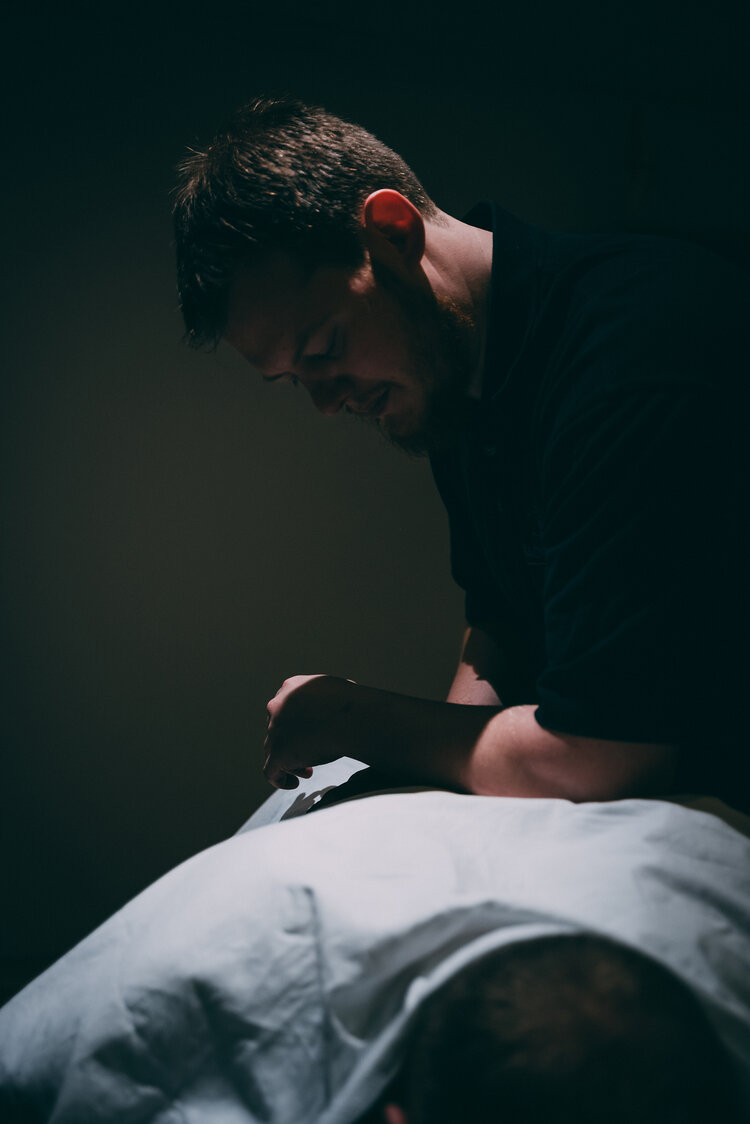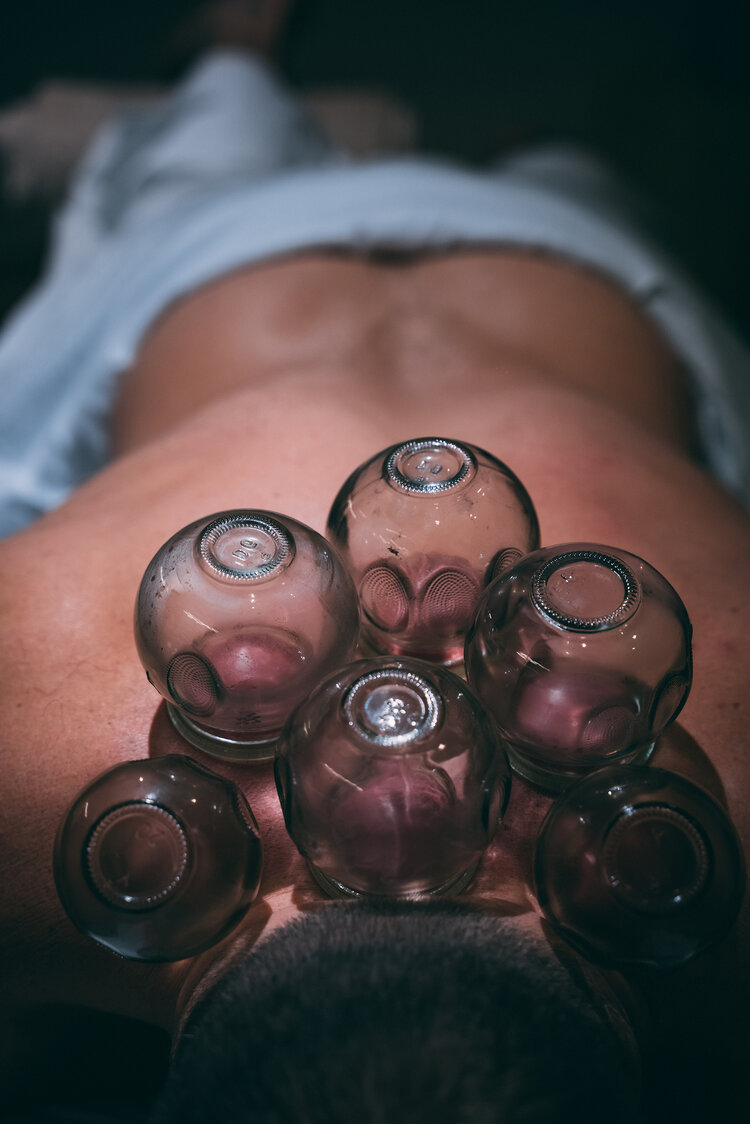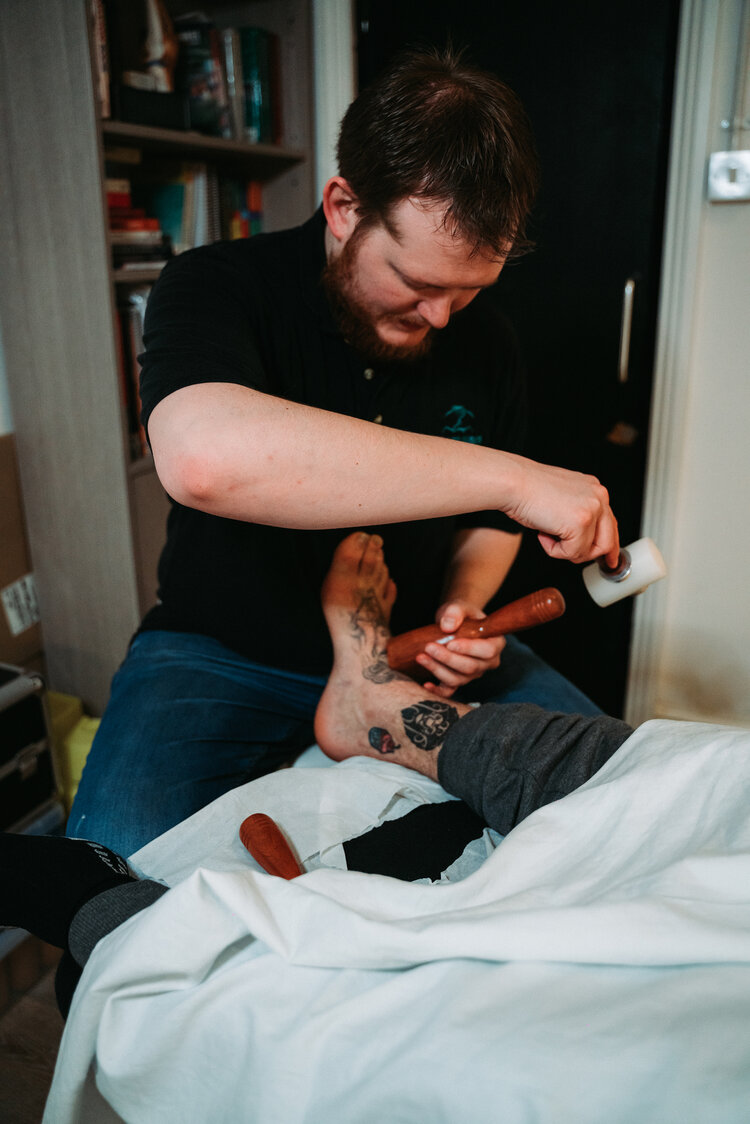Our body is our home. We are only given one. Every day it carries us through life, facing the ever changing elements and evolving with us as we learn not only about ourselves but the world around us. It works effortlessly, twenty four hours a day, fuelled by our thoughts, adapting to a kaleidoscopic landscape. A delicate ecosystem of chemical reactions and sub conscious systems working together without conscious awareness. When we learn and look after our temporary residence, it looks after us. In recent times and as technology has moved to the forefront, many of us have lost connection with not only ourselves but the gentle messages that our bodies give us every day. This can not only lead to physical, mental and emotional imbalances, left unchecked, it can also lead to injury.
Back to Basics Therapy was founded by Paul Jarman in 2013, blending ancient healing techniques with modern sports medicine. Paul was introduced to massage by his mother from a young age but it didn’t occur to him that something so seemingly simple could have such a positive effect on so many of the body’s issues. Over the years, he has sustained his fair share of injuries and struggled to find anyone to assist his recovery. The hospitals recommended various medicines and doctors mostly prescribed rest and restrictive movements. Like most people, Paul was always looking for a quick fix and these recommendations did not resolve his issue. Frustrated with this, he decided it was time to learn about the Human body and find the solution for himself. Back To Basics Therapy helps treat musculoskeletal pain and a vast array of pathologies, from torn ligaments to simply helping clients de-stress. Incorporating new methods of treatment into their work so you get the most up to date techniques ensuring the most effective treatment outcomes.
I first came across your practice whilst seeing you working with James Haskell during his MMA training. What exactly is it that you do?
Let’s address the elephant in the room first, mainstream medicine is not good at maintaining the health of people. For life saving and major issues, absolutely, but managing day to day aches, pains and traumas, the mass end up either giving up or seeking an alternative way to help themselves through frustration from lack of progress and communication. That’s where I come in. I help people discover there is almost always an alternative to mainstream medicine. Even occasionally complimenting it.
Holistic Sport Therapy is probably the best way to describe what I do, I use a combination of ancient healing techniques such as traditional Chinese Medicine with modern Sports Medicine to treat the body and get to the root cause and not just to treat the symptoms of an issue. This combination allows me to really think outside the box, so when it comes to patient assessment I tend to catch small details that might otherwise get overlooked. I know a lot of people are against some traditional methods of manual therapy treatments but I’m firm in my belief that they have stood the test of time for a reason.

How is your therapy style different from a mainstream sports therapist?
I focus on the manual therapy driving the treatment and use the exercise and rehab as the secondary protocol. With the knowledge of various healing arts I really like to mix it up to get the body back to where it needs to be.
A lot of people jump straight into exercise or rehab but I feel when a patient is in severe pain and has significantly less range of motion with loss of strength and power, manual therapy allows us to restore these first and foremost. Helping the patient become more confident with their issue. Once a patient is in a state of acceptable pain threshold or pain free, they generally respond better to rehab plans and fully commit, getting better results.
Helping people in pain is the ultimate goal of any therapy so we address that, then move onto function and performance. There is no point telling someone to do a squat if it hurts half way down. That can really deter a person from continuing their therapy.
What ancient practices have you studied and how do you bring them in to your sessions day to day?
Holistic Therapy and Massage date back about four thousand years in recorded texts. From India, Ancient Egypt and China. I like to have a very broad variety set of skills so have studied everything from Holistic Massage to Acupuncture, Thai Therapy, Traditional Chinese Medicine, variations of Cupping and the most recent being TuiNa physical therapy. There are so many and I want to know and understand them all.
Having the variety I have, I get to pick and choose the best treatment approach for whatever a patient might come to me with. I see everything from tension headaches to extreme chronic issues like road accidents that have changed peoples lives because of the injuries they have sustained. One day I might have someone with a sleeping issue so holistic therapy would best suit, in the same day a dislocated shoulder or even a broken nose so first response and sport therapy would be the choice. Treatments are very specific to the person and the issue they have. Always bespoke and no two treatments are the same.
That is the benefit of having a variety of skills and mixing it up. One style of therapy would diagnose something one way, another would diagnose the same thing differently. It’s then my job to decide which fits better for the best outcome. Let’s take tension headaches for example. In western medicine we are taught to look at the functional aspects of the headache. Posture issues causing imbalances causing the headache, habitual imbalances etc.
But in TCM we use a bit more of a holistic approach, where is the headache? Front, side or back? How often do you get them? Diet, sleep, stress levels? We then diagnose through consultation what disharmony may be happening in the body. Kidney disharmony could be one cause leading to treatment of simple rehydration, other associated symptoms would lead to other types of diagnosis, could be anything from malnutrition to poor vision.
I’ll personally address both sides of the fence on that one as it’s all relevant but with a view to find the underlying cause and stop the headaches returning.

Cupping, what exactly is it and why do you do it?
Cupping is a fantastic tool for treatments. It’s an ancient form of therapy used all over the world historically from aboriginal tribes, for religious purposes in Islam, China, Egypt, Mongolia and was even available on the NHS some years ago. Hijama or Bloodletting is one form of cupping similar to the Leech (Hirudo Medicinalis) therapy that is still used at St Guys Hospital on the NHS.
Cupping is much like the inverse of massage, rather than applying pressure to muscles, it uses gentle negative pressure to pull them upward. If done properly, Cupping is such an effective treatment for tight, contracted muscles. The consistent applied pressure resets the area allowing the muscle to once again contract and relax rather than be constantly painfully contracting. Essentially the idea is that Cupping helps tissue tension, stagnation and by extension improved blood-flow where there is poor circulation. Hijama or blood letting can be used to reduce small areas that may have clotted due to an operation or trauma and for general detoxification of the body.
It helps to clear metabolic wastes (Metabolic wastes or excretes are substances left over from metabolic processes (such as cellular respiration), which cannot be used by the organism (they are surplus or toxic), and must therefore be excreted. This includes nitrogen compounds, water, CO2, phosphates, sulphates, etc.
You work with something that resembles a wooden chisel and mallet. What is it and how does it help the body?
In Thailand its known as Tok-Sen or bone ‘setting’. In Japan, Manaka tapping or in western chiropractic it can be seen as the original version of the activator. The Activator Technique uses gentle impulses to nudge the subluxation to its correct place within the spine, releasing pressure from spinal nerves and eliminating the strain from spinal muscles. It adds a form of Tapping due to the velocity of it. Dr Manaka’s research indicated that the therapy involving the use of the hammer and needle (pointed stick), produce results not so different from conventional light needle acupuncture.
Clinical Psychologist, David Feinstein, states “Tapping balances activity between the sympathetic and parasympathetic regions of your brain, producing “a neutral emotional state,” the gold standard of health and wellness. It’s also the state of well-being people have sought to achieve for millennia through meditation, prayer, yoga, and other mindfulness practices.”
Traditional bone setting, which is a soft manual mobilisation technique focusing on the muscles, joints, and ligaments, appears to be effective in cNP (chronic Neck Pain). Two thirds of subjects experienced it as beneficial and it seems to be able to improve disability and pain in patients with cNP. Subjective and partially objective benefits of TBS (traditional Bone Setting) were found in those patients more than after other interventions and the effects lasted at least for a year. So the benefits to the body are huge if used in the correct context. I love this treatment because it definitely stands out from the crowd. It’s easy to apply and safe under guidance for you to do at home.

What are some of the main myths when it comes to injury rehab?
Oh now that’s a big question, there are a few but it wholly depends on your school of thought and experience. In my experience the most underrated skill is finding the balance between pushing the rehab process and communicating to the patient to listen to their body but most importantly teaching them how. Some people need to push through the pain to feel a satisfaction of progress, some don’t want to push their body hard enough. Some already have a timeframe or idea of how the process will go and it can deter them if the actual process doesn’t fit that vision of theirs, so educating is key regardless.
That being said here are some of the myths I have deciphered:
“The body will just heal on its own!”
Unfortunately that’s not entirely true. I like to say that the body is smart in the stupidest way. It’ll heal but sometimes trauma wont let you progress past a specific stage. An accumulation of compensatory dysfunction is almost certain if you just leave a serious injury to heal on its own, and over time and if you have not had it seen to you can develop other issues that may mask the original symptoms leaving you lost in open water.
R.I.C.E (Rest. Ice. Compress. Elevate) or P.O.L.I.C.E protocols.
These are outdated and no longer entirely relevant. In 2014, Gabe Mirkin (the creator of the RICE mnemonic from 1978) recanted his support for his own creation stating that it may delay the healing process, yet it is still widely used all over. In the British Journal of Sports Medicine the latest adaption of the first response to injury is now P.E.A.C.E & L.O.V.E. I’ve personally never liked to use ice as a control system for injury and this has finally brought forth that idea. Swelling is the body’s healing process so don’t get in its way unless you have to (e.g. too much swelling for too long can lead poor formation of scar tissue). Even then, management of it is key, not stopping the swelling all together. I still don’t feel the process is entirely accurate, ice still has a place in the healing process but it shouldn’t be the only thing used as done in most cases.
“But I’ve always done it like that, I’ve never had a problem before”
“Daily habits determine dysfunction!” and a lot of injuries are an accumulation of poor daily habits coupled with poor understanding of exercises or functional ability vs functional needs. Trying to just power through will generally always end up with a ‘dysfunction’ injury. The trick is to be mindful that the body responds to stress adaption so challenging it in a variety of ways is always functionally better. Doing the same thing over and over almost always ends up in a form of injury.

Much of your time is spent working with MMA fighters, what are some key things that help with injury prevention?
First we have to impart the understanding that athletes will at some stage get injured. These guys push the human body to the limits so the trick is to manage your body to help keep it in a state that mitigates the severity if injuries when they happen and seeking immediate attention when something does eventually happen. We’re used to being told to leave things and rest and ice them (R.I.C.E protocol) and I’ve seen this go on for weeks before the patient gets seen by a practitioner. It only prolongs the process of getting back to play.
Regular therapy with general check ups, a good strength training regime, proper hydration, diet and appropriate amounts of rest are base essentials for prevention. Studies show that if any of these are neglected, the risk of injury goes up significantly. I need to note there will always be the unlucky situation where someone doing all the above will get severely injured and some will use it as an excuse not to follow this advise (the, “oh well he got injured and he does all that so it doesn’t really work so why should I bother” types).
We need to focus on those that follow this lifestyle, who get injured regularly. In the majority, those injuries are not sever or debilitating at all, and that’s the goal. That’s the truest example of a life of an athlete. It will happen so lets make sure when it does it’s managed properly and your body is already in a state it can deal with the trauma.
This article is from: https://www.aliveandstill.com/home/heal-holistic-sport-therapy-for-recovery-with-paul-jarman
